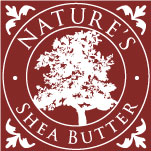About Shea Butter
What is Shea Butter?
Shea butter is a natural fat extracted from the seeds of the shea tree (Vitellaria paradoxa), which is native to the dry Savannah belt of West Africa. The process of obtaining shea butter involves collecting and processing the nuts found within the fruit of the shea tree. These nuts are then crushed, roasted, and kneaded to extract the rich, ivory-colored fat, known as shea butter.
Shea butter is renowned for its moisturizing and nourishing properties, making it a popular ingredient in various skincare and haircare products. It contains a high concentration of fatty acids, vitamins, and antioxidants that contribute to its ability to hydrate and condition the skin. Shea butter is often used to alleviate dryness, soothe irritation, and promote overall skin health.
What is Shea Butter used for?
In addition to its cosmetic applications, shea butter is also utilized in the food industry for cooking and as a source of edible oil. The versatility and natural benefits of shea butter have contributed to its widespread use and popularity in various cultures around the world.
People of all ages and skin types utilize shea butter because of its many uses. Every house should have a jar of shea butter for smoother skin or for treatment of minor skin injuries around the house. Shea butter can be used to treat various skin problems including dry skin, psoriasis, burns, blemishes, eczema, wrinkles and stretch marks. Other uses: Adds and maintain moisture to dry and brittle hair, revitalizes, repairs breakage & split ends and promotes hair growth.
For Moisturizing:
Eczema, Infant eczema
Dermatitis
Dry skin, dry scalp and hair
Psoriasis
Cracked skin
Cracked, bleeding skin
Cuticle repair
Itchy Skin
Muscle fatigue, tension & aches
Rough heels
Rheumatism
Arthritis
Sunburn relief
Skin rashes, diaper rash
Scars
Surgical incisions
Skin blemishes, dark spots
Stretch mark minimization
For Prevention:
Stretch marks during pregnancy
Wrinkle formation
Dry, chapped, itchy skin
Skin peeling
For Skin Protection
Amazing skin moisturizer
Maintaining healthy skin
Softer, smoother skin
Shaving Cream
What are the different varieties/species of Shea Butter?
There are two main varieties of shea butter, Butyrospermum Parkii (West African) and Vitellaria Nilotica (East African). Butyrospermum Parkii is produced in West Africa where as Vitellaria Nilotica is produced only in Northern Uganda and Southern Sudan. At room temperature Eastern African shea butter is softer than West African shea butter. It is creamier and silky, making it quick and easy to apply. Eastern African shea butter is also slightly in higher therapeutic properties. Eastern shea butter has a sweeter scent than West African shea butter. Eastern African shea butter is rarer because of lower shea production and also because of civil unrest in Uganda and Sudan.
What are the differences between Unrefined and Refined Shea Butter?
There are many differences between unrefined and refined shea butter. Most noticeably are the scent, color and benefits. Unrefined shea butter maintains its nutty scent, ivory - beige color and all of its healing properties. Refined shea butter has been chemically altered to remove shea butters natural scent, is bleach white in color and retains only a small portion of its natural healing properties. Please note that some companies sell refined shea butter as 100% pure shea butter.
How is Shea Butter produced?
The 9 major stages of processing include Sorting, Cracking, Roasting, Grinding, Kneading, Boiling, Filtration and Stirring, Packaging, and the final most important stage- Quality Control:
· SORTING: Separating the nut from the unwanted particles (tiny dry leaves, spoiled nut etc and grouping the good nut into different grades.
· CRACKING: An adjusted surface Grinder machine will break the good nuts into the desired size/form to ensure even roasting.
· ROASTING: The cracked nut is roasted in a rotating drum over controlled heat until the nut fully roasted care is taken to avoid burning the nuts.
· GRINDING: The roasted nuts are grinded into a paste (Color—deep brown).
· KNEADING: The paste is cooled, kneaded or beaten adding water until the oil (foamy form) comes up for collection. The collected oil (foamy form) is washed with water until the color becomes light grey. -The best Shea Butter for skin and hair use is prepared either by cold press or a traditional kneading process without the use of added chemicals or preservatives.
· BOILING: The product (foamy form) is boiled under controlled temperatures until all excess water evaporates.
· FILTRATION AND STIRRING: The resultant oil is filtered and stirred until it becomes a pale yellow/cream or beige Butter.
· PACKAGING: Products are packaged in 50 lb plastic lined boxes or heavy duty plastic containers in various sizes as per customer’s specifications.
· QUALITY CONTROL: Every batch of Shea Butter is tested for quality by running an analysis on the following values requiring that the results be within the parameters indicated next to the values. These parameters set forth by the UEMOA (Union Economique Monetaire Ouest Africaine).
What does organic Shea Butter smell like?
Unrefined shea butter has a distinctive nutty scent. However, once applied to skin the scent will start to fade and become very faint in about 20-30 minutes.
What is the shelf life of Shea Butter?
The shelf life of our shea butter is 18-24 months when kept in a cool dry place. You can extend the shelf life of shea butter by keeping it refrigerated.
Is your shea butter fair trade?
Yes, our shea butter is produced by several fair trade cooperatives in Ghana and Uganda. All of our shea crafters produce unrefined virgin shea butter using traditional processing methods.
DISCLAIMER: The information provided on this site is not intended to constitute professional medical advice. Please consult your personal physician with any questions you may have regarding any specific medical condition.
